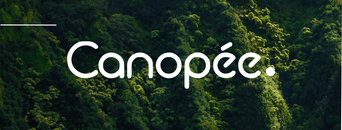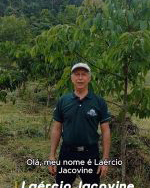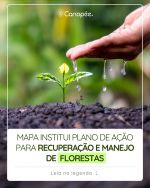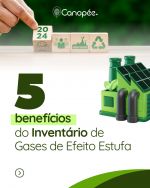1- What are carbon credits?
Carbon credits are certificates issued by environmental projects or companies that have reduced their greenhouse gas (GHG) emissions. Each credit represents the reduction or removal of one ton of carbon dioxide equivalent (CO2e) from the atmosphere.
2- What are REDD+ projects?
REDD+ projects (Reducing Emissions from Deforestation and Forest Degradation) are initiatives that aim to reduce greenhouse gas emissions from deforestation, forest degradation, sustainable forest management and forest conservation.
3- What is carbon neutral?
Being carbon neutral means offsetting all of your greenhouse gas emissions so that your net emissions are zero. This is achieved through actions such as reducing your own emissions and offsetting the remaining emissions, usually through CO2 capture or reduction projects.
4- What is a carbon footprint?
A carbon footprint is a measure of greenhouse gas emissions, primarily carbon dioxide, associated with human activities or with a product, service or organization. It reflects the environmental impact in terms of CO2 emissions.
5- Are carbon credits reliable?
Yes, carbon credits are reliable when they come from projects or companies that follow recognized certification standards and are monitored by credible institutions. The authenticity of the credits can be verified through registrations on global platforms.
6- Can any company be carbon neutral?
Yes, any company can take steps to become carbon neutral. This includes reducing internal emissions, investing in clean technologies, and offsetting remaining emissions by purchasing carbon credits or investing in sustainable projects.
7- How are my carbon emissions offset?
Carbon emissions can be offset by purchasing carbon credits from projects that capture or reduce CO2 from the atmosphere. These projects can be related to forest conservation, renewable energy, reforestation, energy efficiency, among others.
8- What do carbon credits or environmental assets do to reduce emissions?
Carbon credits or environmental assets represent verified reductions in greenhouse gas emissions. By purchasing them, companies or individuals are encouraging and financially supporting projects and initiatives that contribute to reducing emissions and combating climate change.
9- What is a forest conservation and carbon credit generation project?
A forest conservation and carbon credit generation project is an initiative that aims to protect natural forest areas and/or promote reforestation and sustainable forest management. These projects seek to reduce greenhouse gas emissions, generating carbon credits as a result of the actions implemented.
10- How do these projects generate carbon credits?
These projects generate carbon credits by preventing deforestation, reducing forest degradation, or through carbon sequestration carried out by trees and planted vegetation. Each carbon credit represents one ton of carbon dioxide equivalent (CO2e) that was stopped from being emitted or was captured from the atmosphere.
11- How important is it to invest in forest conservation projects and carbon credits?
Investing in forest conservation projects and carbon credits is a concrete way to combat climate change. These initiatives protect ecosystems, biodiversity and contribute to the reduction of greenhouse gas emissions, helping to mitigate global warming.
12- How can my company benefit from these projects?
Your company can benefit by adopting an environmentally responsible stance, reducing its carbon footprint and demonstrating a commitment to sustainability. By participating in these projects, you can offset your own carbon emissions and obtain certifications that add value to your brand.
13- Are these projects regulated?
Yes, forest conservation and carbon credit generation projects are generally regulated and follow internationally recognized standards, such as the Verified Carbon Standard (VCS), Plan Vivo System, American Carbon Registry Forest Project Standard, ABNT NBR ISO 14064 and SOCIALCARBON. These standards guarantee the environmental integrity and transparency of the actions implemented.
14- Who certifies the carbon credits generated by the projects?
Carbon credits are certified by independent entities, such as Bureau Veritas, the Verified Carbon Standard (VCS) and other renowned organizations, which verify the validity of the emission reductions achieved by the projects.
15- In addition to environmental benefits, do the projects have a social impact?
Yes, many forest conservation projects have positive social impacts. They can generate jobs in local communities, encourage sustainable development and contribute to improving the quality of life of populations near protected areas.
16- How can I measure the impact of the project on reducing carbon emissions?
The projects are developed with robust monitoring systems that allow measuring and reporting carbon emission reductions over time. In this way, it is possible to monitor the positive environmental impact generated by the project.
17- What is the YUXIBU REDD+ Project?
The YUXIBU REDD+ Project is a forest conservation project that aims to protect the native Amazon rainforest and its rich biodiversity from the threats of deforestation. It also seeks to promote sustainable development, both economically and socially, for the local communities involved. The project was launched in 2005 and aims to reduce greenhouse gas emissions by an amount equivalent to 3,311,169 tons of carbon dioxide (tCO2eq) over a period of 30 years.
The area covered by the project is 15,934 hectares, where forest preservation and conservation actions are implemented. To ensure the authenticity and credibility of the emissions reductions achieved, the YUXIBU REDD+ Project is certified by Bureau Veritas, a renowned certification and auditing company.
18- What is the methodology used to certify the Yuxibu Project?
The Bureau Veritas REDD methodology is one of the most complete and rigorous on the market for Reducing Emissions from Deforestation and Forest Degradation (REDD+) projects. It is based on several other recognized and established methodologies in the sector, ensuring that the projects developed meet the highest standards of quality, transparency and reliability.
The methodologies that serve as the basis for Bureau Veritas REDD include:
Voluntary Carbon Standard (VCS): An international standard for greenhouse gas emission reduction projects, which guarantees environmental integrity and accurate measurement of results.
Plan Vivo System: A standard for forest carbon projects that promote sustainable development in rural and indigenous communities.
American Carbon Registry Forest Project Standard: A standard used for afforestation and reforestation projects focused on reducing carbon emissions.
ABNT NBR ISO 14064: A Brazilian standard that establishes principles and requirements for the quantification, monitoring and reporting of greenhouse gas emissions.
SOCIALCARBON: A standard that assesses the social benefits of carbon projects, such as impacts on the local community, benefit distribution and sustainable development.
19- How can we start a forest conservation and carbon credit generation project for our company?
To start a project, it is recommended to look for a company specialized in developing forest conservation and carbon credit generation projects, such as Canopée. These companies have the expertise to provide guidance on best practices, appropriate certifications and the steps necessary for the successful implementation of the project.
20- What type of work does Canopée perform?
Canopée performs various types of work related to forest conservation and climate change mitigation, such as:
Development of socio-environmental projects for forest conservation and generation of carbon credits: The company works on the design and implementation of projects that aim to protect forest areas, reduce deforestation and promote carbon capture, generating certified carbon credits.
Marketing of offset and preservation credits for companies: Canopée offers carbon credits and offsets to companies interested in neutralizing their greenhouse gas emissions and contributing to environmental preservation.
Preparation of greenhouse gas inventories: The company helps organizations calculate and quantify their greenhouse gas emissions in their operations, allowing a better understanding of their environmental impact.
Measurement/quantification of greenhouse gas emissions: Canopée performs accurate measurements and analyses of greenhouse gas emissions, ensuring reliable data for reduction and compensation actions.
Preparation of GRI reports: The company helps create sustainability reports aligned with the Global Reporting Initiative (GRI) guidelines, allowing companies to communicate their actions and environmental impacts in a transparent and responsible manner. In addition, Canopée can offer other services and customized solutions to meet the specific needs of each client, always focusing on environmental preservation and the pursuit of sustainable development.
Addresses:
Av. Pres. Juscelino Kubitschek, 1455 – 4º andar 04543-011 – São Paulo / SP
Brasília - DF
Viçosa - MG









